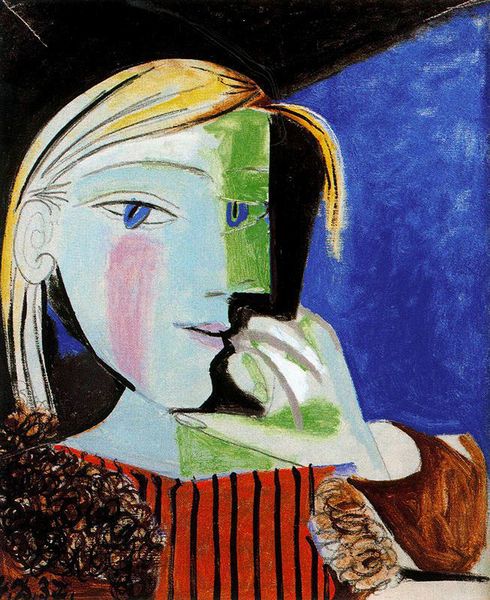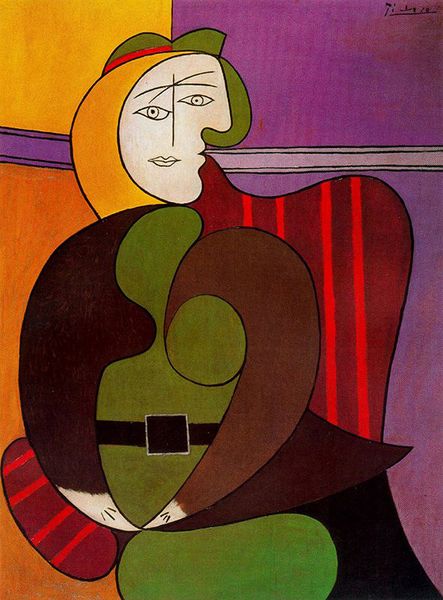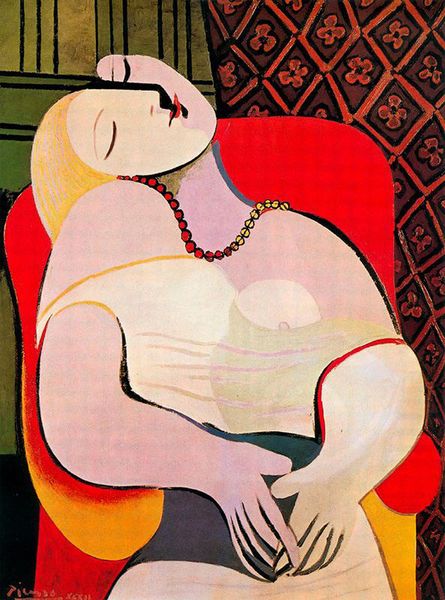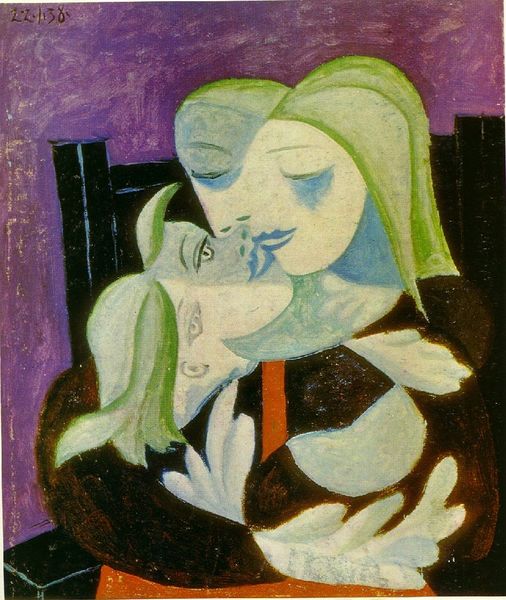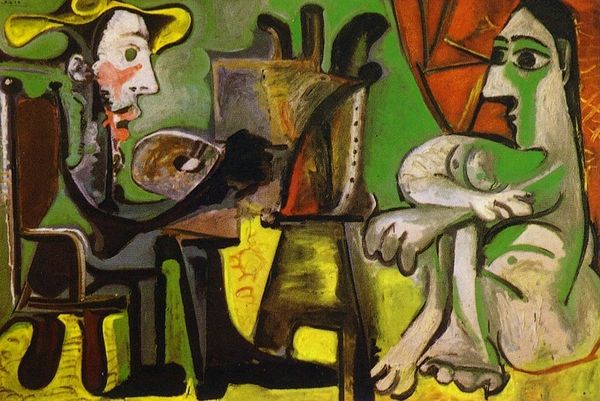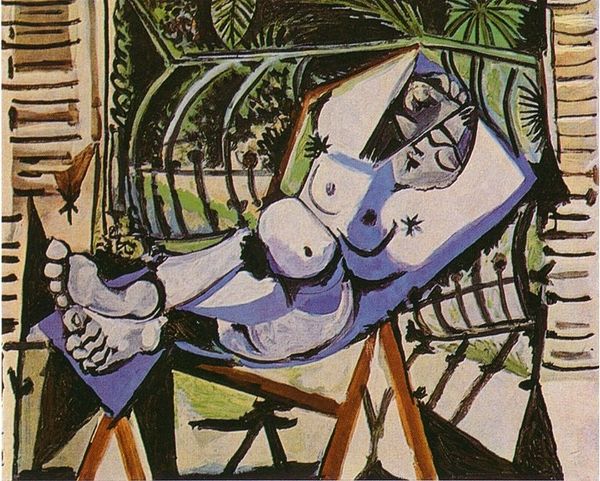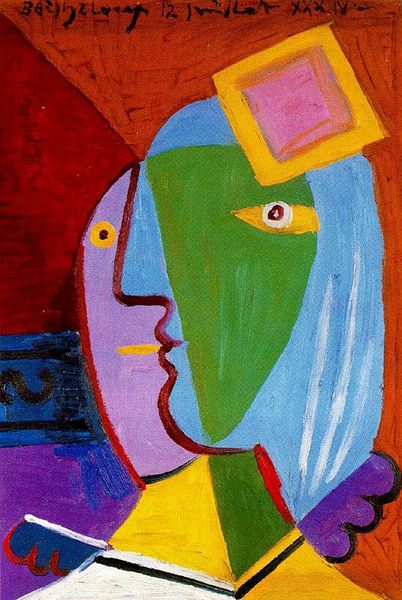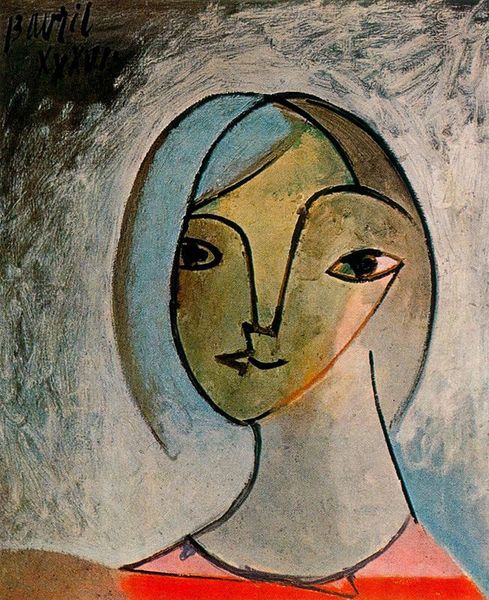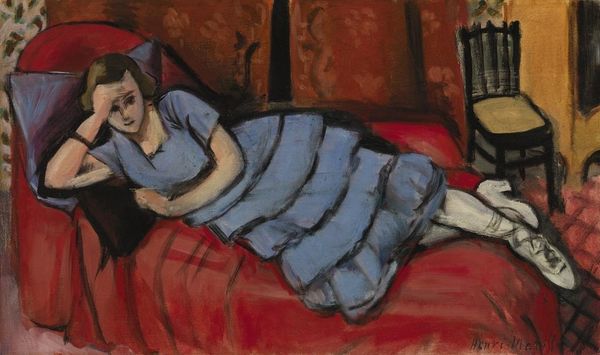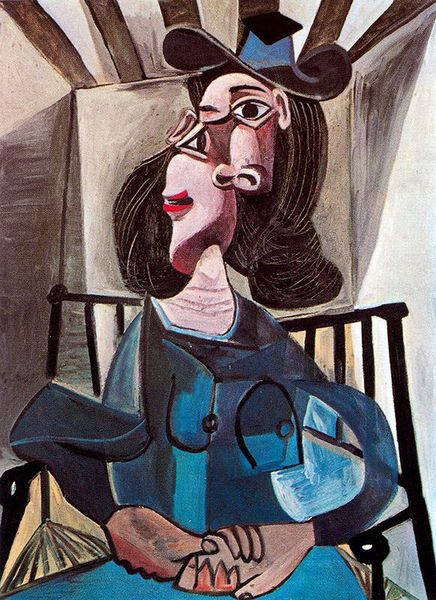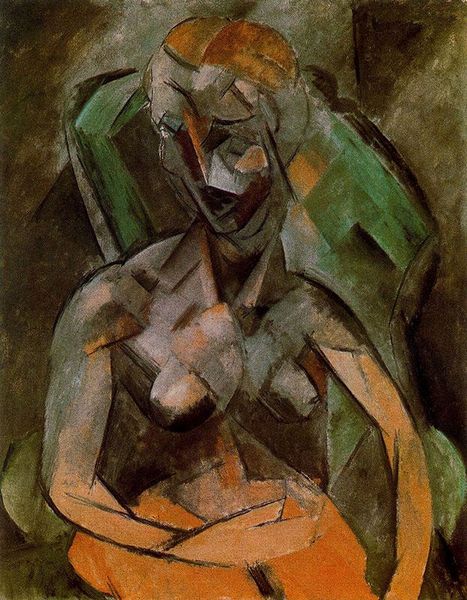
painting, oil-paint
#
portrait
#
cubism
#
self-portrait
#
painting
#
oil-paint
#
landscape
#
neo expressionist
#
acrylic on canvas
#
facial portrait
#
portrait art
#
modernism
Copyright: Pablo Picasso,Fair Use
Curator: Let's focus our attention on Pablo Picasso's "Reclining Woman Reading," a 1960 oil painting currently held at the Musée Picasso in Paris. It's a powerful portrait in his distinct cubist style. What are your initial impressions? Editor: My initial thought? Serenity. The woman's pose, her softened expression...there's a stillness in this image, as though we've caught her in a quiet moment of reflection between chapters. I can almost smell the old paper and leather from the book she is holding. Curator: Yes, it's deceptively still. But the raw materials Picasso employed here also tell a story. The thickness of the oil paint, applied with visible brushstrokes, underscores the physicality of art making. You can almost see the labor in that layering. Editor: Absolutely. Look at the use of that almost monotone backdrop with that electric pop of emerald green window, like she is somewhere timeless, yet defined by a period of modern innovation in the use of color. This era, and the materials available to artists then, is just as important to explore. Curator: Precisely! Consider how Picasso deliberately disrupted the traditional notions of portraiture. It’s less about accurately representing the subject, and more about capturing the psychological or emotional truth—filtered through the lens of Cubism, that breaks the sitter into component parts, rearranged for our consumption. Editor: Exactly! And that electric blue, a color both rich and melancholic... Picasso seems to capture how those moments of solitude can be both nourishing and a bit sad. It's amazing to consider his creative insight—transforming raw paint and canvas into a mirror for our own private emotional worlds. Curator: By bringing process to the forefront, and examining his conscious choices, the material conditions in which art is created come to the surface. I appreciate how that tension opens it up to be analyzed beyond just subject matter. Editor: I agree. To encounter a piece like this, is a conversation. We bring ourselves to it, and through his craft and vision, it reflects part of us back. I'll never see it quite the same way again. Curator: Indeed.
Comments
No comments
Be the first to comment and join the conversation on the ultimate creative platform.
